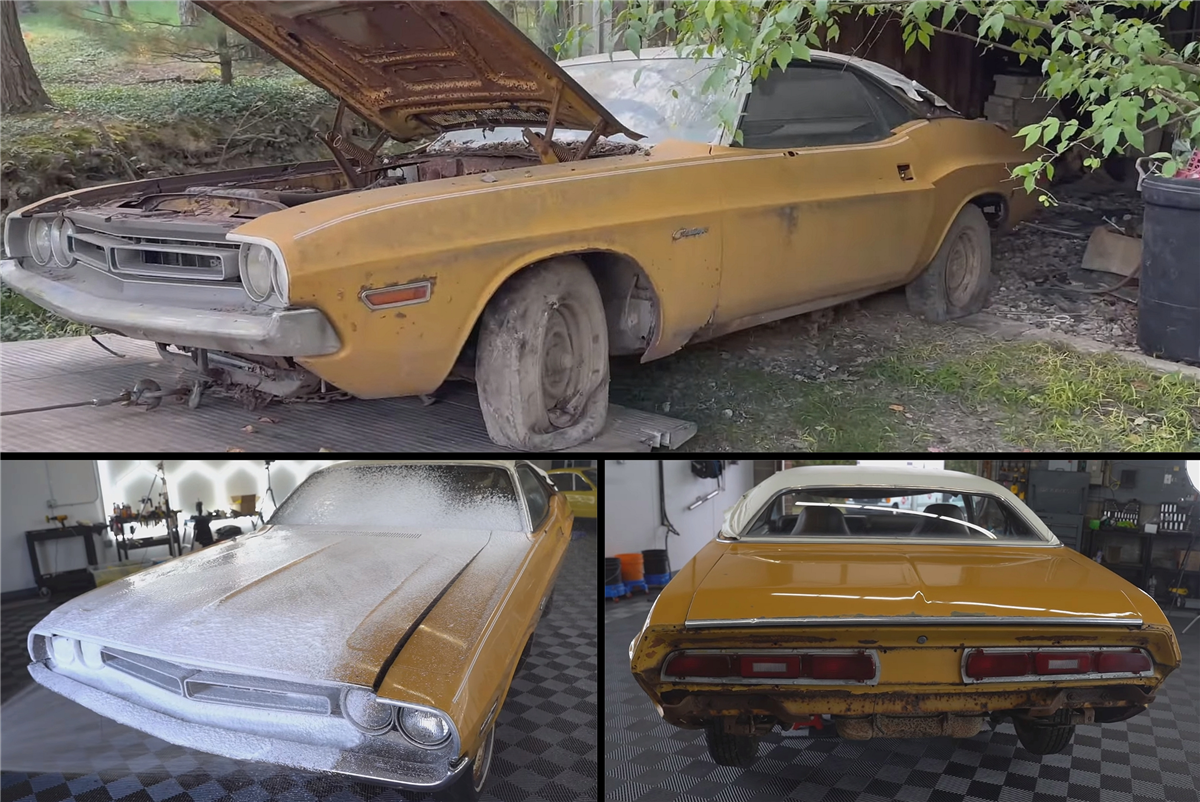The majority of modern-day barn-found classics are unremarkable automobiles from the 1950s to the 1970s. However, occasionally owners or barn finders locate legitimately rare automobiles. One of them is this 1971 Dodge Challenger.
The second model year of the original Mopar was 1971. In 1970, the Challenger sold close to 77,000 units, which indicates its popularity. Sales, however, fell to just 27,377 units in 1971 as many enthusiasts stayed away from muscle cars due to high insurance premiums for high-performance vehicles.
That’s still a relatively high production figure for an early 1970s automobile, right? Well, while the 1971 Challenger may be common overall, specific versions are scarce. Of the 27,000+ vehicles built that year, fewer than 5,000 were ordered with the R/T package. Only 71 got the 426-cubic-inch (7.0-liter) HEMI V8, and just 250 were specified with the 440-cubic-inch (7.2-liter) six-barrel RB.
But not just big-block automobiles are uncommon. With only 1,755 units produced, the entry-level six-cylinder model is also hard to find. Then there is the convertible, of which no matter the engine, only 1,857 were sold. This Bahama Yellow vehicle lacks a large block, is neither an R/T nor a convertible. It is, however, rather uncommon due to the engine and transmission combination.

This Mopar is one of only 10 produced in 1971 with a 318-cubic-inch (5.2-liter) V8 and a three-speed manual transmission, according to the owner. With the information at hand, I haven’t been able to verify this number, but I’m confident he’s not just whistling Dixie. Let me also explain why.
Dodge offered three gearboxes with the Challenger in 1971. Options included the TorqueFlite automatic and either a four- or three-speed manual. The automatic was by far the most popular, accounting for more than 70% of total sales. The four-speed found its way in about 24% of the Challengers ordered that year, leaving the three-speed manual as an option in fewer than 1,000 units.
I haven’t been able to dig up specific info on 318/three-speed cars, but the available figures indicate very low production numbers for this gearbox regardless of the engine. Specifically, only 41 examples fitted with the 340-cubic-inch (5.6-liter) V8 were also ordered with the three-speed. As for the 383-cubic-inch (6.3-liter) V8, only 59 R/Ts and just three non-R/T models were produced with this gearbox.
All told, while the owner doesn’t mention the source of his “one-of-ten” assumption, it wouldn’t be far-fetched for Dodge to have sold only two handfuls of 318/three-speed Challengers in 1971. And even if more were built, the Bahama Yellow/white top combo makes it scarce, too.

But regardless of the paint and what’s under the hood, this Mopar spent a whopping 40 years in a barn and emerged with only 19,208 miles (30,912 km) on the odometer. That mileage is lower than you’ll find on most 1971 Challengers today. It’s also a numbers-matching, mostly original rig.
The coupe emerged with a thick layer of grime covering its shell and a nasty-looking engine bay. Both cleaned up nicely once the folks at WD Detailing did their magic. I’d say the Bahama Yellow paint looks incredible for a coating that’s 52 years old as of 2023. The same goes for the white vinyl top, even though it shows significant damage on the C-pillars.
On the other hand, the interior is a mixed bag of good and bad news. The good news is that the dashboard is free of the unsightly cracks typically found in long-term storage and the chairs appear to be nearly brand new. The front and rear seats, however, had significant holes under them from rust. So much so that after detailing, our host ran out of room on the floor to reattach the driver’s seat. Ouch!
So, even if the car’s first wash in 40 years produced generally excellent results, this Mopar will require a significant financial investment to regain its ability to travel. Since 318 V8 cars aren’t very sought-after or valuable, it’s probably not worth saving, but hopefully the owner will view this Challenger as a work of love.
